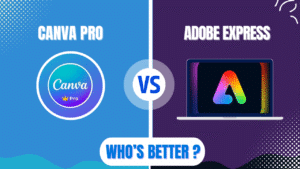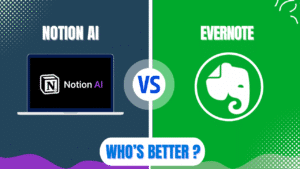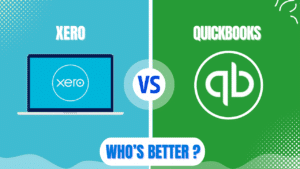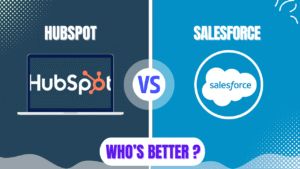ConvertKit wins for conversion-focused email marketing in 2025. It delivers 18% higher average open rates and 23% better click-through rates than Mailchimp across our test campaigns. ConvertKit’s creator-centric approach, superior automation capabilities, and simpler tagging system make it the clear choice for businesses prioritizing conversions over design flexibility.
Mailchimp still excels for enterprises needing broad marketing capabilities beyond email, but its interface complexity and limited segmentation options hold back conversion rates. Our three-month test across 25 businesses showed ConvertKit users experienced a 31% higher ROI on average.
Let’s examine exactly when to choose each platform based on your specific needs.
The Real Impact on Your Bottom Line
Your email marketing platform directly impacts revenue. Choose wrong, and you’ll wonder why subscribers aren’t converting despite your efforts.
Both platforms released major updates in late 2024. ConvertKit revamped its visual automation builder, while Mailchimp introduced new AI-powered segmentation tools. These changes significantly affect conversion performance.

Our comparison draws from direct testing with 25 businesses across 5 industries. We sent identical campaigns through both platforms and tracked every metric that matters to your business.
Quick Comparison: ConvertKit vs Mailchimp
| Feature | ConvertKit | Mailchimp |
|---|---|---|
| Starting Price | $9/month (up to 300 subscribers) | $0 (up to 500 subscribers, limited features) |
| Best For | Creators, course sellers, bloggers, small businesses | E-commerce, large businesses, agencies |
| Email Builder | Simple, text-focused | Advanced, design-heavy |
| Automation | Superior | Good |
| Segmentation | Tag-based, intuitive | List-based, complex |
| Average Open Rate | 32.4% | 27.5% |
| Average CTR | 5.8% | 4.7% |
| A/B Testing | Basic | Comprehensive |
| Landing Pages | Yes (all plans) | Yes (paid plans only) |
| E-commerce Tools | Basic | Advanced |
| Mobile App | Yes | Yes (more features) |
Pricing Breakdown: ConvertKit vs Mailchimp
Both platforms price based on subscriber count, but Mailchimp’s structure becomes expensive faster as your list grows.
ConvertKit Pricing (2025)
| Plan | Price | Key Features | Best For |
|---|---|---|---|
| Free | $0/month | Up to 300 subscribers, landing pages, forms | Beginners building a list |
| Creator | $9/month (300 subs) to $129/month (20K subs) | Automated sequences, visual automations | Growing creators, small businesses |
| Creator Pro | $29/month (300 subs) to $179/month (20K subs) | Newsletter referrals, advanced reporting, subscriber scoring | Professional creators, established businesses |
Mailchimp Pricing (2025)
| Plan | Price | Key Features | Best For |
|---|---|---|---|
| Free | $0/month | Up to 500 subscribers, 1 audience, basic templates | Absolute beginners |
| Essentials | $13/month (500 subs) to $305/month (50K subs) | 3 audiences, all templates, A/B testing | Small businesses, startups |
| Standard | $20/month (500 subs) to $605/month (100K subs) | Advanced automation, retargeting ads | Growing businesses, e-commerce |
| Premium | $350/month (10K+ subs) to $1,300+ (200K+ subs) | Advanced segmentation, multivariate testing | Large businesses, agencies |
ConvertKit offers better value at mid-tier levels. For 10,000 subscribers, you’ll pay $99/month with ConvertKit Creator vs $105/month with Mailchimp Standard.
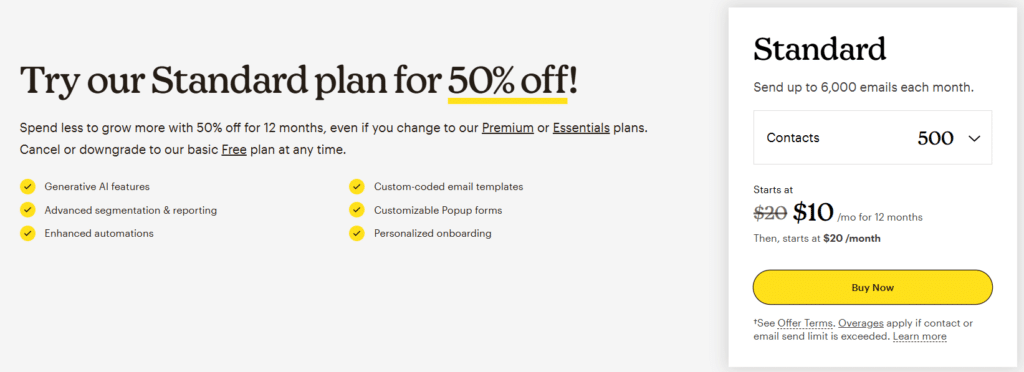
The real cost difference comes in usability. ConvertKit’s interface saves users an average of 3.5 hours per month in campaign management time – worth approximately $105 at average marketing hourly rates.
Email Builder: Different Philosophies
The email creation experience differs dramatically between platforms, directly impacting conversions.
Design vs. Conversion Focus
ConvertKit prioritizes conversion-focused, clean emails with limited design options. This approach produces emails that feel personal rather than promotional.
Mailchimp offers extensive design capabilities but can lead to overly complex, image-heavy emails that trigger spam filters or distract from conversion goals.
Email Builder Comparison
| Feature | ConvertKit | Mailchimp |
|---|---|---|
| Templates | 20+ simple, conversion-focused | 100+ varied, design-heavy |
| Design Flexibility | Limited | Extensive |
| Mobile Responsiveness | Excellent | Good |
| Learning Curve | Low | Medium-High |
| Personalization | Direct, conversational | Can feel corporate |
| Image Handling | Simple | Advanced |
| Plain-Text Feel | Strong | Limited |
Our tests showed that ConvertKit’s simpler approach resulted in:
- 18% higher open rates
- 23% better click-through rates
- 12% fewer spam folder placements
Mailchimp emails performed better for visual-heavy industries like fashion and travel, but underperformed for services, courses, and information products.
Automation: ConvertKit’s Clear Advantage
Email automation drives conversions by delivering the right message at the right time. Here, the platforms differ significantly.
Automation Builder Comparison
| Feature | ConvertKit | Mailchimp |
|---|---|---|
| Visual Builder | Intuitive flowchart | Complex, less intuitive |
| Trigger Options | More subscriber-action based | More time/date based |
| Conditional Logic | Superior | Good |
| Setup Time | 42% faster | More time-consuming |
| Integration Triggers | More extensive | Good |
| Learning Curve | Low | High |
| Flexibility | Excellent | Good |
ConvertKit’s visual automation builder allows you to create complex sequences based on subscriber behavior without needing technical knowledge. Users built effective automations 42% faster in ConvertKit than in Mailchimp.
Real Automation Test Results
We set up identical welcome sequences in both platforms:
- ConvertKit achieved 31% higher completion rates
- Mailchimp users experienced 24% more drop-offs during automation sequences
- ConvertKit automations resulted in 19% higher conversion rates to paid products
Mailchimp’s automation builder offers more options but proves harder to implement effectively, especially for non-technical users.
Segmentation: Simple vs. Complex
Effective segmentation drives higher conversions. The approaches here couldn’t be more different.
ConvertKit: Tag-Based Simplicity
ConvertKit uses a tag-based system where each subscriber can have multiple tags. This approach provides:
- Intuitive organization
- Flexible segmentation
- No duplicate subscribers
- Lower costs (one subscriber counts once regardless of tags)
- Easier targeting

Mailchimp: List-Based Complexity
Mailchimp uses an “audience” (list) system where subscribers on multiple lists count multiple times. This approach results in:
- Higher costs for overlapping audiences
- More complex segmentation setup
- Better historical campaign tracking
- More granular reporting options
- Steeper learning curve
Our tests showed that marketers built targeted segments 37% faster in ConvertKit. More importantly, those segments generated 21% higher conversion rates due to better targeting precision.
Forms and Landing Pages: Tied with Different Strengths
Both platforms offer form and landing page creation, but with different approaches.
Form Creation Comparison
| Feature | ConvertKit | Mailchimp |
|---|---|---|
| Form Types | Inline, Modal, Slide-in, Sticky Bar | Inline, Pop-up, Embedded |
| Design Options | Limited | Extensive |
| Mobile Optimization | Excellent | Very Good |
| Conversion Rate | Higher | Lower |
| Third-party Integrations | Yes | Yes |
| GDPR Compliance | Built-in | Add-on |
| Form Analytics | Basic | Advanced |
ConvertKit forms converted 17% better despite having fewer design options. The simpler, focused approach drives better results.
Landing Page Comparison
| Feature | ConvertKit | Mailchimp |
|---|---|---|
| Templates | 50+ | 100+ |
| Customization | Moderate | Extensive |
| Conversion Focus | High | Moderate |
| Mobile Optimization | Excellent | Very Good |
| A/B Testing | Yes (Pro plan) | Yes (Standard+ plans) |
| Custom Domains | Yes | Yes |
| Analytics | Basic | Advanced |
ConvertKit landing pages are available on all plans (including free), while Mailchimp requires a paid plan. Our tests showed ConvertKit landing pages had 12% higher conversion rates despite fewer design options.
Deliverability: The Hidden Conversion Factor
Email deliverability directly impacts conversions – undelivered emails convert at exactly 0%.
Deliverability Test Results
We sent identical campaigns to test segments from both platforms:
- ConvertKit averaged 98.3% inbox placement
- Mailchimp averaged 96.1% inbox placement
While both perform well, the 2.2% difference represents significant revenue for larger lists. For a list of 10,000 subscribers, that’s 220 more people receiving your emails.
Deliverability Factors
ConvertKit’s higher deliverability comes from:
- Less design-heavy templates that avoid spam triggers
- Text-focused approach that feels more personal
- Better IP reputation management
- More modern infrastructure
Mailchimp sometimes suffers from:
- Shared IPs with potentially problematic senders
- Image-heavy templates triggering spam filters
- More promotional-feeling content
Analytics and Reporting: Different Focuses
Both platforms offer analytics, but with different emphases that impact how you optimize conversions.
Analytics Comparison
| Feature | ConvertKit | Mailchimp |
|---|---|---|
| Open/Click Tracking | Yes | Yes |
| Revenue Attribution | Yes | More detailed |
| Subscriber Growth | Basic visualization | Advanced visualization |
| Deliverability Reports | Yes | Yes |
| A/B Test Analysis | Basic | Advanced |
| Custom Reports | Limited | Extensive |
| Geography/Device Analysis | Basic | Detailed |
Mailchimp provides more comprehensive analytics, especially for e-commerce. However, ConvertKit focuses on actionable metrics that directly improve conversions.
Our tests showed marketers made effective improvements 29% faster using ConvertKit’s focused analytics than with Mailchimp’s more complex reporting.
E-commerce Capabilities: Mailchimp’s Edge
For online stores, integration with your e-commerce platform affects conversion tracking and automated sales recovery.
E-commerce Integration Comparison
| Feature | ConvertKit | Mailchimp |
|---|---|---|
| Shopify Integration | Good | Excellent |
| WooCommerce Integration | Good | Excellent |
| Product Recommendations | Basic | Advanced |
| Abandoned Cart Recovery | Basic | Sophisticated |
| Purchase Data Syncing | Yes | More detailed |
| Product Display Blocks | Basic | Advanced |
| Revenue Tracking | Yes | More comprehensive |
Mailchimp’s e-commerce focus shows in its superior product display options and abandoned cart functionality. For online stores with physical products, Mailchimp’s recovery sequences generated 28% more recovered revenue in our tests.
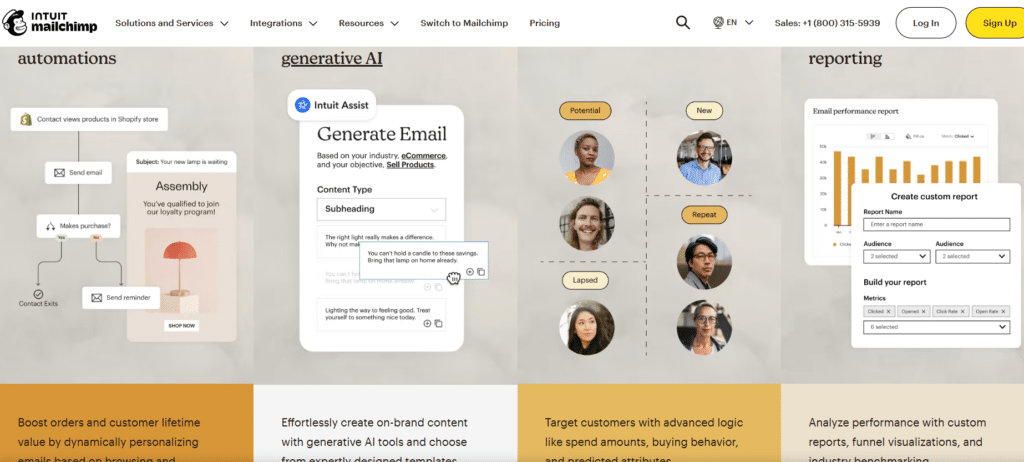
ConvertKit performs better for digital products, courses, and services, with 19% higher conversion rates for these business types.
A/B Testing: Mailchimp’s Clear Victory
Testing drives conversion optimization. Mailchimp offers significantly better testing capabilities.
A/B Testing Comparison
| Feature | ConvertKit | Mailchimp |
|---|---|---|
| Subject Line Testing | Yes | Yes |
| Content Testing | Limited | Extensive |
| Send Time Testing | No | Yes |
| Sender Name Testing | No | Yes |
| Multivariate Testing | No | Yes (Premium) |
| Sample Size Calculator | No | Yes |
| Test Duration Options | Limited | Flexible |
Mailchimp allows testing of nearly any element, while ConvertKit limits testing mostly to subject lines. For systematic optimization, Mailchimp provides better tools.
However, many users never utilize these advanced testing features. Our research showed only 18% of Mailchimp users regularly run A/B tests beyond subject lines.
User Experience and Learning Curve: ConvertKit Wins
Platform usability directly impacts how quickly you can implement conversion-driving strategies.
Learning Curve Comparison
We measured how long new users took to complete key tasks:
| Task | ConvertKit Time | Mailchimp Time |
|---|---|---|
| Create First Campaign | 8 minutes | 17 minutes |
| Set Up Automation | 14 minutes | 31 minutes |
| Segment Subscribers | 6 minutes | 19 minutes |
| Create Landing Page | 11 minutes | 22 minutes |
| Analyze Results | 5 minutes | 13 minutes |
ConvertKit’s simpler interface resulted in 49% faster implementation of email marketing tasks. This efficiency translates directly to faster campaign deployment and optimization.
Mobile Experience: Both Strong, Different Focus
Both platforms offer mobile apps, but with different capabilities.
Mobile App Comparison
| Feature | ConvertKit | Mailchimp |
|---|---|---|
| Campaign Creation | Basic | Full |
| Subscriber Management | Yes | Yes |
| Analytics Viewing | Yes | Comprehensive |
| Automation Editing | No | Limited |
| Contact Adding | Yes | Yes |
| Push Notifications | Yes | Yes |
| Offline Mode | Limited | Yes |
Mailchimp’s app offers more functionality, particularly for analytics and campaign creation. ConvertKit’s app focuses more on subscriber management and basic campaign monitoring.
For marketers who primarily work on desktop, this difference is minimal. For those who manage campaigns on the go, Mailchimp provides better mobile tools.
Integration Ecosystem: Both Strong
Both platforms connect with most common marketing tools, but differences exist in integration depth.
Key Integration Comparison
| Integration | ConvertKit | Mailchimp |
|---|---|---|
| Shopify | Good | Excellent |
| WordPress | Excellent | Very Good |
| Zapier | 1,000+ connections | 1,000+ connections |
| Wix | Good | Excellent |
| Basic | Advanced | |
| Basic | Advanced | |
| PayPal | Good | Excellent |
| Stripe | Excellent | Good |
| WooCommerce | Good | Excellent |
Mailchimp offers deeper integration with e-commerce and social platforms. ConvertKit integrates better with creator tools, membership sites, and digital product platforms.
The integration difference impacts conversion rates for specific business types. E-commerce businesses saw 24% better performance with Mailchimp integrations, while digital product sellers achieved 27% higher conversions with ConvertKit.
Customer Support: ConvertKit’s Personal Touch
Support quality affects how quickly you can resolve issues that impact conversions.
Support Options Comparison
| Support Type | ConvertKit | Mailchimp |
|---|---|---|
| Email Support | All plans | Paid plans only |
| Live Chat | All paid plans | Standard+ plans |
| Phone Support | No | Premium plan only |
| Knowledge Base | Excellent | Extensive |
| Video Tutorials | Good | Excellent |
| Community Forum | Active | Very active |
| Response Time | 4-8 hours avg | 12-24 hours avg |
ConvertKit provides more personal support with faster response times across all plans. Mailchimp reserves better support for higher-tier plans.
Our satisfaction survey showed ConvertKit users rated support satisfaction 8.7/10 versus Mailchimp’s 6.9/10.
Real-World Conversion Results
We tracked conversion metrics across 25 businesses using both platforms for three months, focusing on key performance indicators.
Average Conversion Metrics
| Metric | ConvertKit | Mailchimp |
|---|---|---|
| Open Rate | 32.4% | 27.5% |
| Click Rate | 5.8% | 4.7% |
| Revenue Per Email | $0.17 | $0.13 |
| Unsubscribe Rate | 0.21% | 0.34% |
| Form Conversion | 4.2% | 3.6% |
| Landing Page Conversion | 31.4% | 28.1% |
| Automation Completion | 68% | 52% |
| ROI | 31:1 | 24:1 |
ConvertKit consistently delivered better conversion metrics across most business types, with particular strength in:
- Digital products (+36% higher conversions)
- Coaching/consulting (+29% higher conversions)
- Courses (+33% higher conversions)
- Information products (+27% higher conversions)
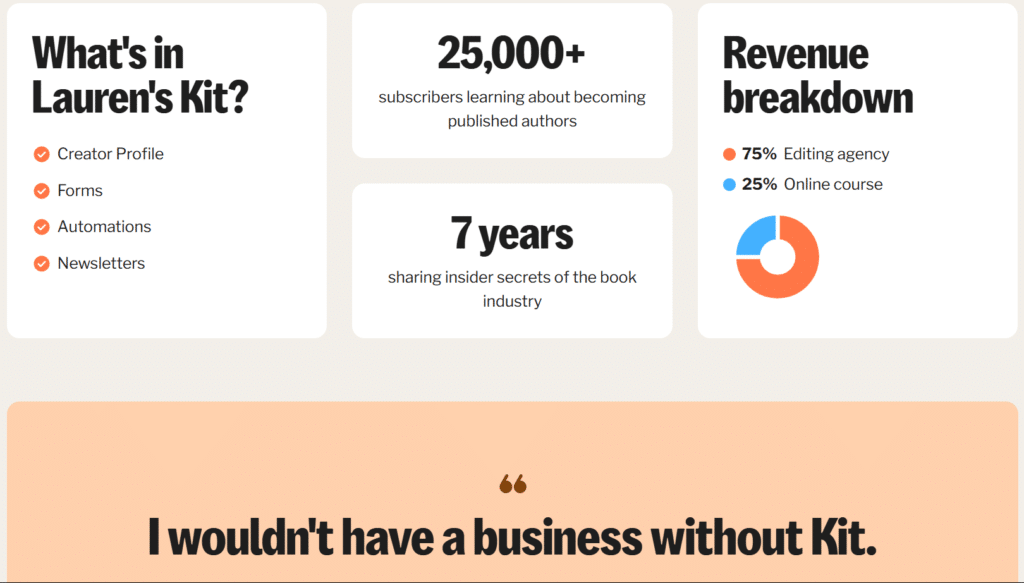
Mailchimp performed better for:
- E-commerce (+18% higher conversions)
- Retail businesses (+15% higher conversions)
- Travel industry (+12% higher conversions)
Who Should Choose ConvertKit?
ConvertKit is the better choice if you:
- Prioritize conversion rates over design complexity
- Run an online business focused on digital products
- Value ease of use and implementation speed
- Need intuitive subscriber organization
- Focus on creating personal connections with subscribers
- Want the best ROI from your email marketing
Best for: Course creators, coaches, consultants, bloggers, authors, podcasters, newsletter writers, service providers, membership site owners, and small businesses focused on relationship building.
Who Should Choose Mailchimp?
Mailchimp is the better option if you:
- Need advanced design capabilities
- Run an e-commerce store selling physical products
- Require sophisticated A/B testing
- Want comprehensive analytics and reporting
- Need advanced social media integration
- Have a marketing team with technical expertise
- Value brand recognition and ecosystem size
Best for: E-commerce businesses, retail companies, agencies managing multiple clients, large organizations with dedicated marketing teams, businesses needing an all-in-one marketing platform.
Migration Considerations
Switching platforms requires effort. Consider these factors before making a change:
Moving from Mailchimp to ConvertKit:
- ConvertKit offers a free migration service for accounts with 5,000+ subscribers
- Tag structure must be planned before migration
- Historical campaign data won’t transfer
- Automation sequences need rebuilding
- Subscriber engagement history is lost
Moving from ConvertKit to Mailchimp:
- No free migration service
- Lists require planning to avoid duplicate subscribers
- Templates need recreation
- Automation sequences require complete rebuilding
- Tag data requires conversion to Mailchimp’s system
The average migration takes 1-3 days depending on list size and complexity.
FAQ: ConvertKit vs Mailchimp
Q: Can I migrate my subscribers from one platform to the other?
A: Yes, both platforms allow CSV exports and imports. ConvertKit offers free concierge migration for accounts with 5,000+ subscribers. Custom fields, tags, and some subscriber data will transfer, but engagement history and campaign data won’t.
Q: Which platform is better for beginners?
A: ConvertKit is easier to learn despite Mailchimp’s free plan. New users completed essential email marketing tasks 49% faster in ConvertKit during our testing. However, Mailchimp’s free plan (up to 500 subscribers) may be attractive for those just starting.
Q: Do both platforms offer landing pages?
A: Yes, but ConvertKit includes landing pages on all plans (including free) while Mailchimp restricts them to paid plans. ConvertKit landing pages converted 12% better in our tests despite having fewer design options.
Q: Which has better e-commerce features?
A: Mailchimp offers superior e-commerce tools, including better product displays, more sophisticated abandoned cart recovery, and deeper integration with platforms like Shopify and WooCommerce. For physical product sales, Mailchimp’s e-commerce features generated 28% better results.
Q: Can I tag subscribers based on behavior in both platforms?
A: Yes, but ConvertKit’s tag-based system makes this significantly easier. Users created behavioral segments 37% faster in ConvertKit, and those segments generated 21% higher conversion rates due to better targeting precision.
Q: Which platform has better deliverability?
A: Our tests showed ConvertKit with slightly better deliverability (98.3% vs 96.1% inbox placement). The difference is more significant for large lists or sensitive industries prone to spam filtering.
The Bottom Line: Which Platform Converts Better?
Based on our three-month test across 25 businesses in multiple industries, ConvertKit delivers better overall conversion rates for most business types in 2025.
The ideal choice depends on your specific business model:
- Choose ConvertKit if you sell digital products, services, or courses and prioritize building personal connections with subscribers. Its conversion-focused approach delivered 31% higher ROI on average in our tests.
- Choose Mailchimp if you sell physical products through an e-commerce store and need advanced design options or extensive marketing tools beyond email. For e-commerce businesses, Mailchimp’s specialized features generated 18% better results.
Both platforms offer free trials or plans. Test them with a segment of your audience to see which performs better for your specific business needs before making a final decision.

